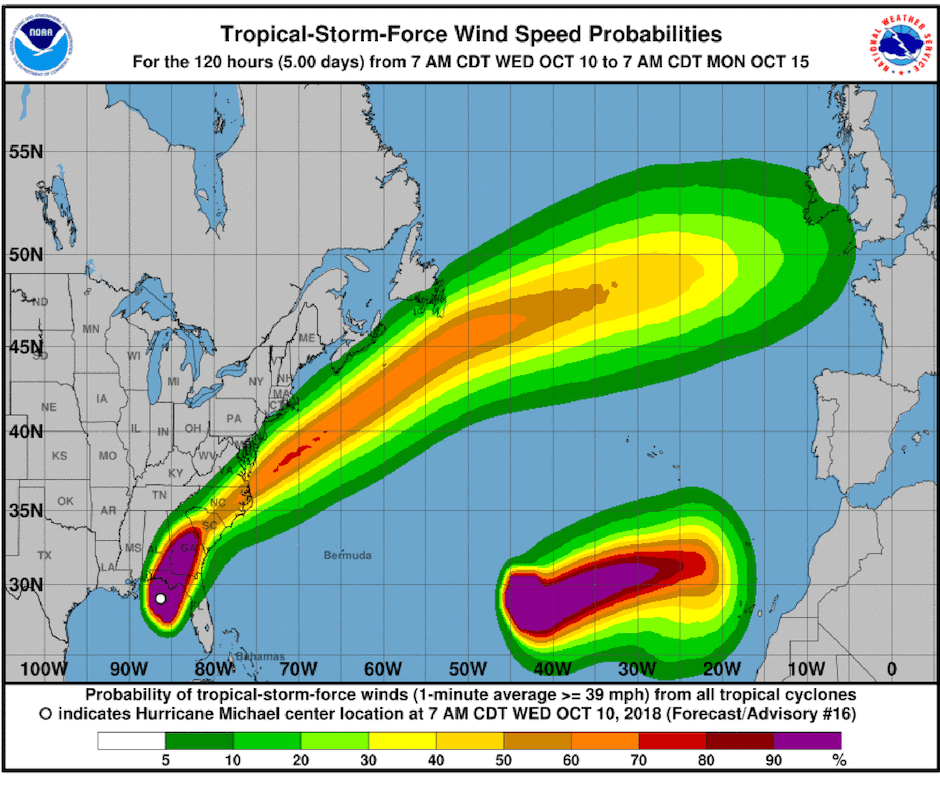Hurricane Michael has made landfall with the Florida panhandle as a very scary Category 4. That is the second-highest category, with winds of 130 to 156 MPH. You can imagine what kind of damage that can do to buildings and highways, let alone a truck, so if you are in or near the Gulf Coast of Florida or Alabama, or anywhere in the path of the storm, PLEASE seek shelter and make safety your one and only priority.
Many freight brokers, including some of the largest 3PLs, are charged with moving and warehousing emergency freight. They may be handling this work on behalf of FEMA itself or for a non-governmental agency like the American Red Cross, and they post those loads onto the DAT Load Board.
Here is our guide on how to find FEMA loads and what to consider when hauling emergency freight.

Hurricane Michael barreled toward the Gulf Coast, and made landfall today in the Florida panhandle. This map of expected wind speeds was published yesterday by the National Weather Service.
As we’ve said in the past, hurricanes usually affect freight movements in three stages:
- Before the storm, if it is predicted in advance, shippers rush to move freight out of the way. Outbound rates rise sharply in the area where the storm is expected to make landfall. Michael is landing right after the close of a quarter, so rates were expected to rise last week anyway.
- During the storm, nothing moves in or out of the affected area. It’s just not safe. FEMA and other organizations will be moving emergency relief supplies to locations just outside the storm zone, so they’re ready to act as soon as roads are clear.
- After the storm is over, emergency supplies are brought in, and inbound rates shoot way up, at least for a while. Van and reefer freight move in first, followed by flatbeds hauling construction equipment and materials.
Flooding and power outages can snarl supply chains for weeks or even months after a major storm. If you want to help with relief efforts, contact the American Logistics Aid Network (ALAN). They’re already posting a list of needs, which usually includes trucks, other heavy equipment, and warehouse space.
The American Logistics Aid Network urges everyone to follow important guidelines before, during and after the hurricane.
- Make personal safety a priority. Follow instructions promptly, to evacuate or to shelter in place.
- Stay informed about road closures. Check with the Department of Transportation for Florida, Alabama, or Georgia, or call 511.
- Don’t bring supplies to the area on your own. You might end up impeding relief efforts.
You can also get updates from the National Weather Service or the National Hurricane Center
After landfall, Michael is expected to move up the East Coast as a tropical storm in the coming days. The winds will be less intense, but there’s still danger of storm surges and flooding in Georgia and the Carolinas, and maybe as far north as New Jersey.
Stay safe out there!
Follow us on Facebook and Twitter for updates on how Hurricane Michael affects freight markets and supply chains.

